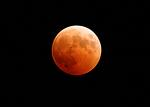The CDF for (c) takes the shape of a quadratic function that opens to the right. It is fitted to the function y = sqrt(x/255).
Codes:
This code. It aims to perform histogram equalization and get the probability distribution function and cumulative distribution function of both the original and the enhanced. Its histogram-getting part is taken from Mr. Tugaff's code.
A=imread('sunflower3.jpg');
A = A-1; //because the image that would be read would have pixel values from 1 to 256.
val=[];
num=[];
counter=1;
for i=0:1:255
[x,y]=find(A==i);
val(counter)=i;
num_(counter)=length(x);
counter=counter+1;
end
num = num_./((size(A,1))*size(A,2));
plot(val, num_);
cdf = [];c
cdf(1) = num(1);
for i = 2:256
cdf(i) = num(i) + cdf(i-1);
end
plot(val,cdf)
dimensions = (size(A,1)*size(A,2));
B = zeros(size(A,1),size(A,2));
for i = 0:1:255
[x,y] = find(A==i);
for k=1:length(x)
B(x(k),y(k)) = (cdf(i+1) - min(cdf))/(dimensions -min(cdf));
end
end
B = B/max(max(B));
B = round(B*255);
counter = 1;
val2=[];
num = [];
num2_ = [];
for i=0:1:255
[x,y]=find(B==i);
val2(counter)=i;
num2_(counter)=length(x);
counter=counter+1;
end
num2 = num2_./((size(B,1))*size(B,2));
plot(val2, num2_);
cdf2 = [];
cdf2(1) = num2(1);
for i = 2:256
cdf2(i) = num2(i) + cdf2(i-1);
end
plot(val2,cdf2)
To get the images for section (c), custom enhancement, we simply this part of the above code
B = zeros(size(A,1),size(A,2));
for i = 0:1:255
[x,y] = find(A==i);
for k=1:length(x)
B(x(k),y(k)) = (cdf(i+1) - min(cdf))/(dimensions -min(cdf));
end
by
B = zeros(size(A,1),size(A,2));
for i = 0:1:255
[x,y] = find(A==i);
for k=1:length(x)
B(x(k),y(k)) = (cdf(i+1) - min(cdf))*(cdf(i+1) - min(cdf))/(dimensions -min(cdf));
end
SELF-EVALUATION RATING: 10/10 because I got a straight line for the CDF of the histogram-equalized image.
Credits:
Orignal sunflower photo was taken from: Christopher Maxwell, PhotographerWedding Photography: Black and White Info, http://www.christophermaxwell.com/black-white.htm
The part of the above code that get the histogram of an image is lifted from a code by Mr. Jeric Tugaff.












 FileName: C:\Documents and Settings\AP186user20\Desktop\ap186_june24\grayscale.bmp
FileName: C:\Documents and Settings\AP186user20\Desktop\ap186_june24\grayscale.bmp










